The experience-water nature trail at the Resterkogel
Since last summer, a lot has happened on the Resterkogel. The Resterkogel summer experience was created near the top station of the Panoramabahn Kitzbüheler Alpen cable car and features panoramic views of the National Park. A climbing wall, a Bobby-Car race track, trampolines and a Kneipp water treading pool are a joy to families with children. The water nature trail at the Resterkogel reservoir emphasises the importance of water for the habitat at the Resterkogel. In the shallow water zone, children can splash around at will and playfully let off steam.
Accessible with
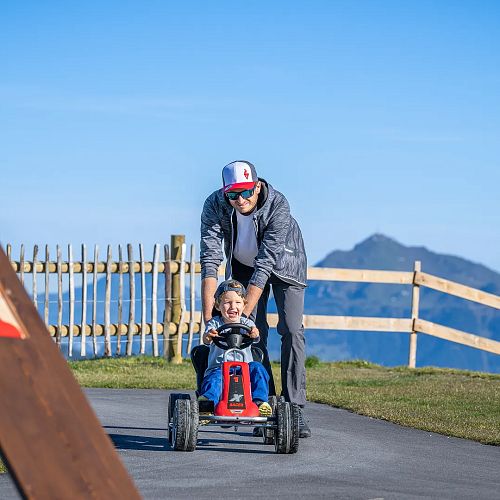

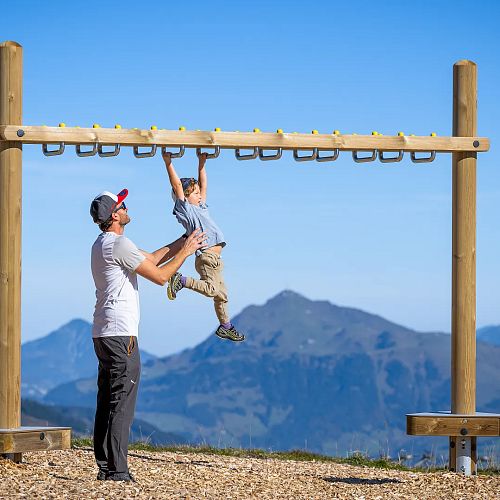
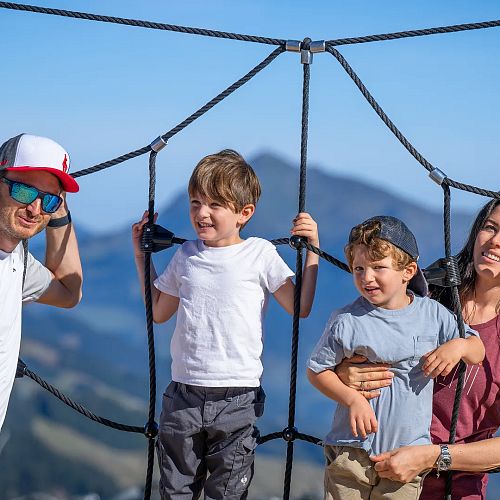
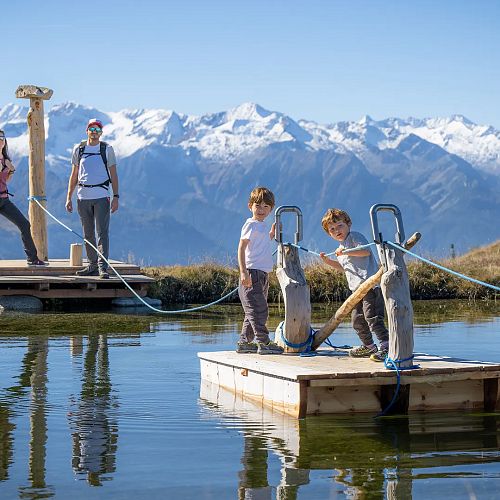
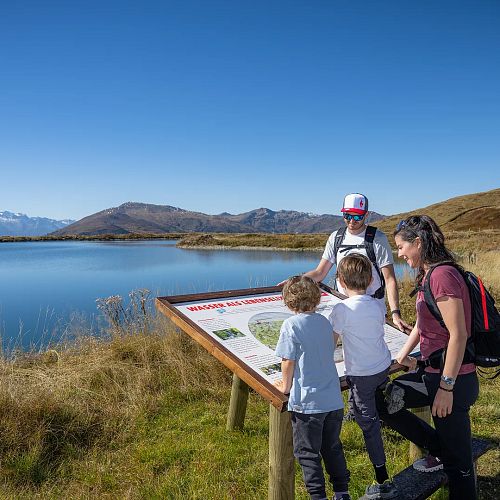
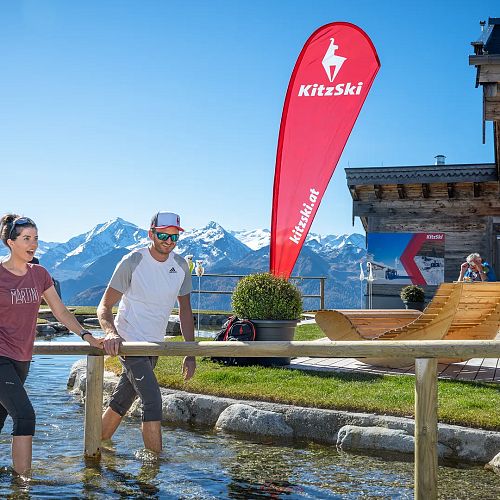
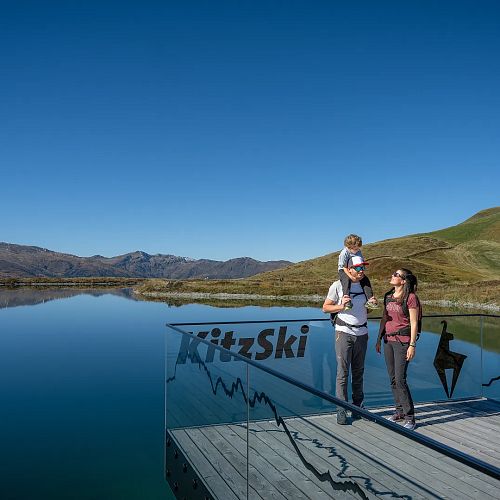
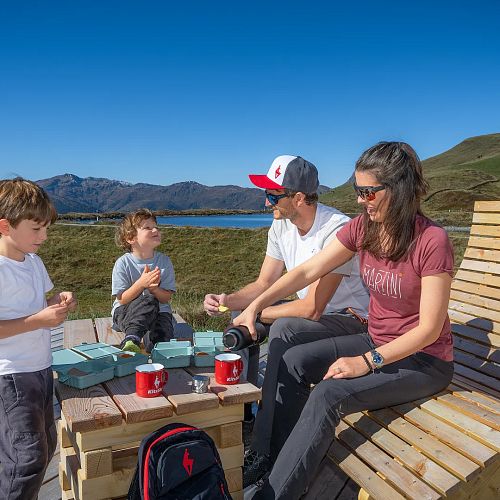
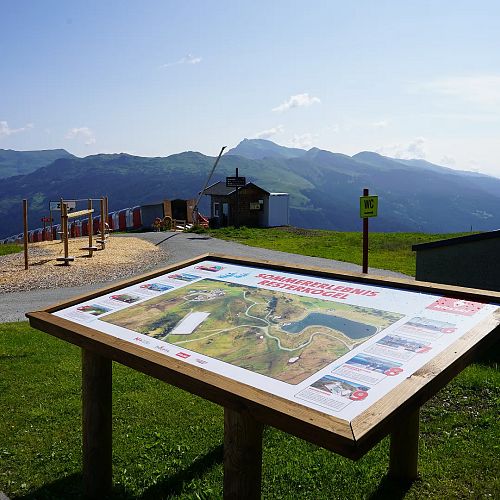
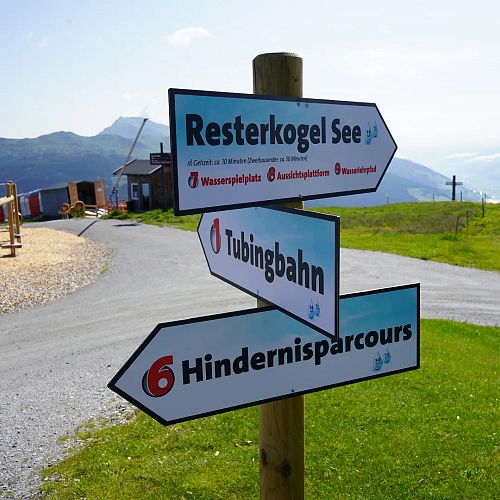
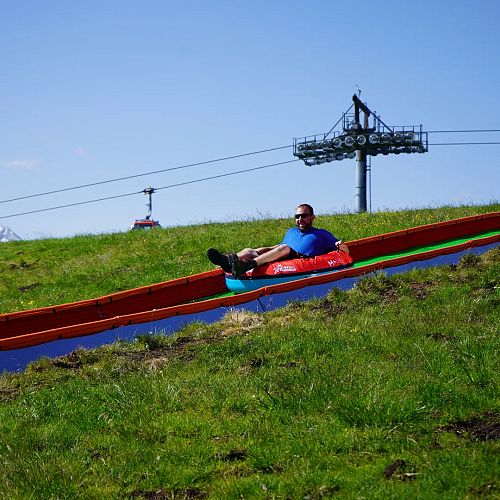
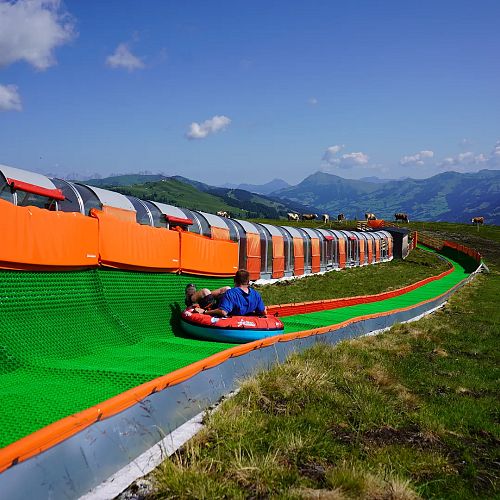

Summer experience and water nature trail
In 2005, a reservoir was built on the Resterkogel, which was surrounded by numerous artificial and natural biotopes. The storage reservoir measures 10.5 metres at its deepest point and holds around 175,000 m³ of water. With this available amount, KitzSki produces artificial snow in winter, an important component for the high quality of the slopes.
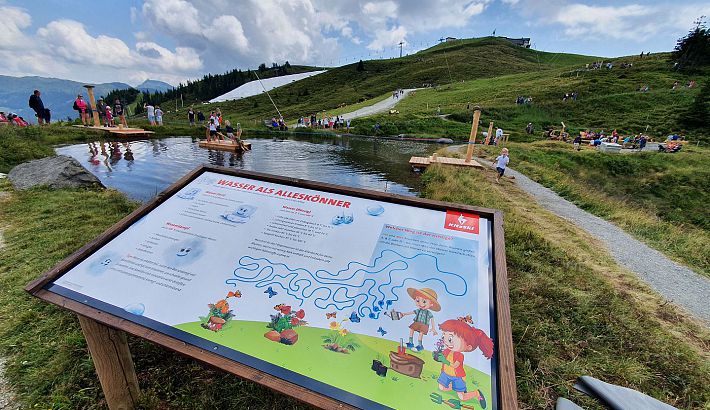
The viewing platform is a popular place to take a souvenir photo; i.e. happy faces in the foreground and the glittering crystals of the reservoir and white summits of the Hohe Tauern mountain range in the background. Good to know: With a valid lift ticket, a souvenir photo can also be taken at the photo point (in the immediate vicinity of the platform). At skiline.cc, you can download your photos free of charge.
Water as a habitat
Biotopes are home to common toads, common frogs, Alpine newts and Alpine salamanders. In addition, there are different sphagnum mosses growing in bogs and also in the dwarf shrub heath on the Resterhöhe. Whilst peat mosses have unlimited top growth, the lower parts of the moss die each time. The incomplete rotting in the absence of air can produce peat. This phenomenon can also be found in small areas of dwarf shrub heath. In addition, due to their ion exchange capacity, peat mosses can create "acidic" conditions in their environment that few other plants can tolerate. All habitats where peat mosses occur are therefore very specialised. Like all mosses, sphagnum mosses reproduce by spores. In warm weather, the spore capsules are "blown up” and the sound is easily audible. In the process, the spores can reach speeds of up to 130 km/h. Peat mosses have an enormous capacity for water storage, which is a result of the special structure of the leaf cells. With the help of these water storage cells (hyalocytes), they can absorb up to 30 times their dry weight in water.
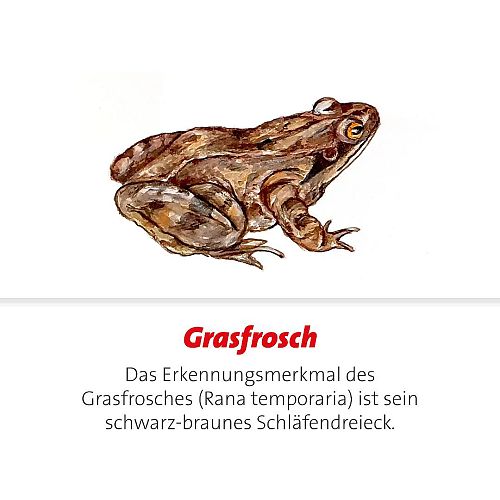
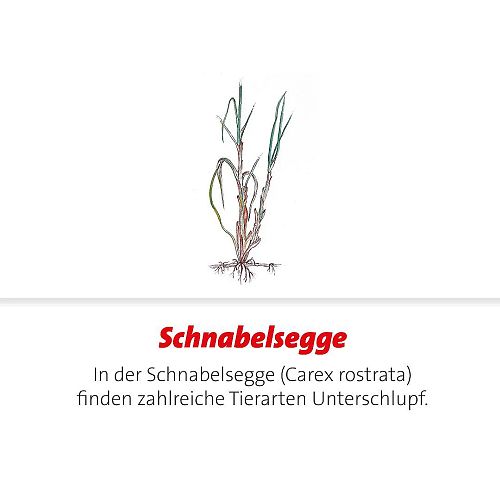
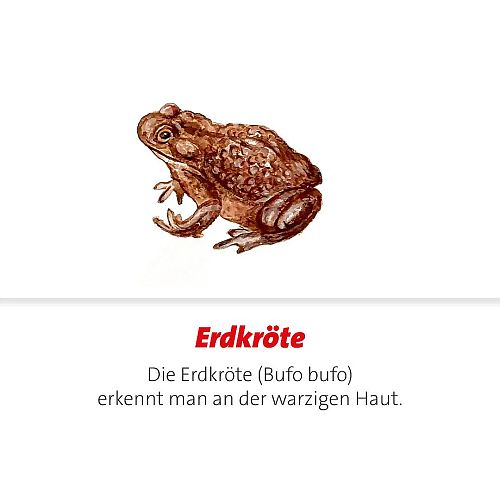
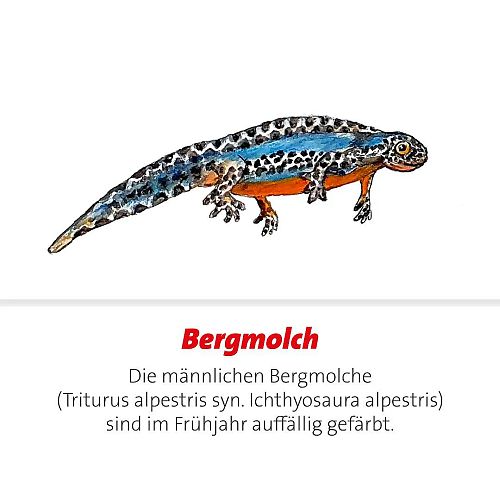
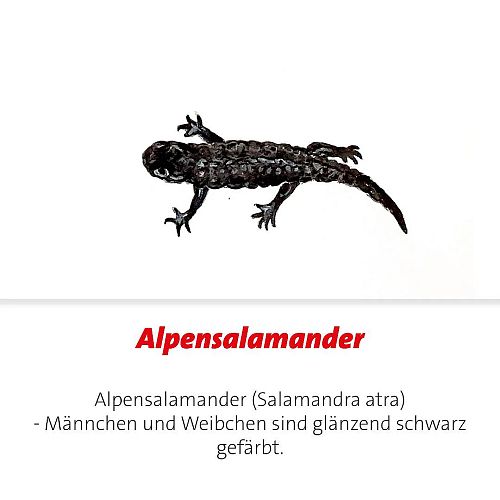
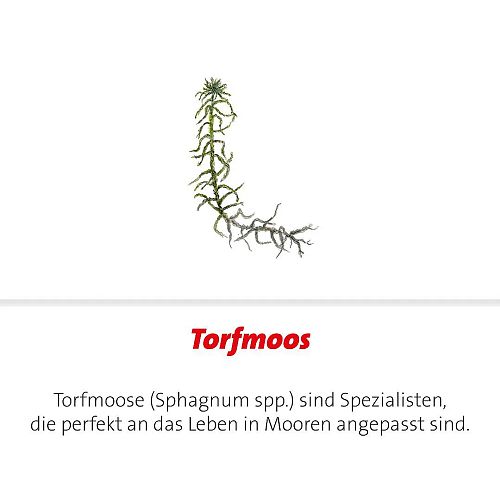
Water: The elixir of life
Without water there would be no life. The human body consists of 60 to 75 percent water. The Earth's surface is covered by 71 percent water. Here in Austria, a single person uses an average of 130 litres of drinking water per day. Two litres of this are consumed by drinking and another two litres for cooking. The rest is consumed for personal hygiene, cleaning, gardening and flushing toilets.
Drinking water is sourced from groundwater, surface water and other sources. Rain transports the water and is therefore an important part of the water cycle. Wherever water collects or flows, important habitats are created, which we humans enjoy visiting in order to relax. This was also the case at the Resterhöhe, where, in the midst of numerous natural biotopes, the conditions were ideal for building a reservoir. This reservoir was perfectly integrated into nature and gives the impression of having been part of the natural environment since time immemorial. In cooperation with biologists, authorities and landowners, a wonderful environment was created, which showcases how the harmonious interaction of man and nature can succeed.





